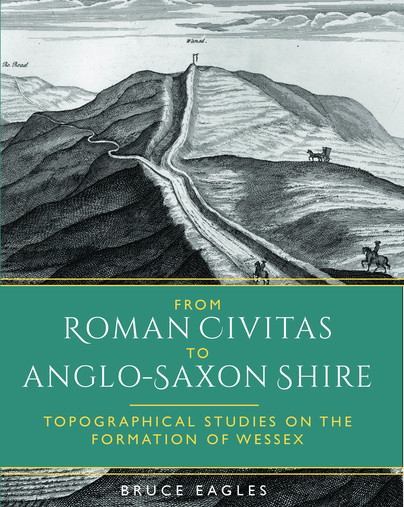Google Books previews are unavailable because you have chosen to turn off third party cookies for enhanced content. Visit our cookies page to review your cookie settings.
From Roman Civitas to Anglo-Saxon Shire (Paperback)
Topographical Studies on the Formation of Wessex
Imprint: Oxbow Books
Pages: 264
Illustrations: b/w and colour
ISBN: 9781785709845
Published: 12th July 2018
Script Academic & Professional
Pages: 264
Illustrations: b/w and colour
ISBN: 9781785709845
Published: 12th July 2018
Script Academic & Professional
You'll be £34.99 closer to your next £10.00 credit when you purchase From Roman Civitas to Anglo-Saxon Shire. What's this?
+£4.99 UK Delivery or free UK delivery if order is over £40
(click here for international delivery rates)
Order within the next 10 hours, 29 minutes to get your order processed the next working day!
Need a currency converter? Check XE.com for live rates
(click here for international delivery rates)
Order within the next 10 hours, 29 minutes to get your order processed the next working day!
Need a currency converter? Check XE.com for live rates
This book is the culmination of the author’s lifelong interest in the Roman to medieval transition in England and in the analysis of the historic landscape of Wessex. It begins with a focused, referenced, and critical exploration of the thorny, but crucial, issues of post-Roman personal and group identity, employing linguistic, historical, archaeological and toponymical evidence. A series of integrated studies seek to elucidate changes in the territorial organisation of the Wessex landscape, from Somerset to Hampshire, from the Roman period to the emergence of the historic counties. It is shown that the defined limits of the self-governed Roman civitates had a significant impact upon subsequent historical developments, not least on the early English settlements. In eastern Wessex - Berkshire, Hampshire and Wiltshire – the Roman boundaries broke down piecemeal, but continued to influence political developments and patterns of settlement into the seventh century. It is argued that those three counties acquired their medieval and later form only at the time of the Viking wars. In western Wessex, Dorset and Somerset, by contrast, the core of the territories of both the southern and northern Durotriges in the Roman period has persisted until the present day. The book also includes a re-examination of the formation and extent of the kingdom of the Jutes in southern Hampshire and on the Isle of Wight. The chronology, history and archaeology of the fifth century, set alongside the many changes of the later fourth century, and vital to our understanding of the momentous events of that time as Saxon control took hold in the east , are here the subject of a separate, detailed study. Place-names across Wessex with a bearing on the presence of the Britons, and the changing nature and distribution of archaeological sites in the fifth, sixth and seventh centuries, are discussed in their historical context.
Other titles in Oxbow Books...















